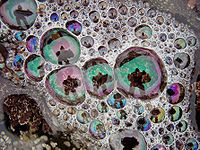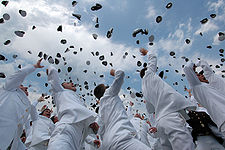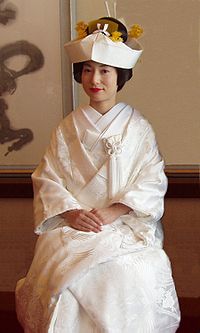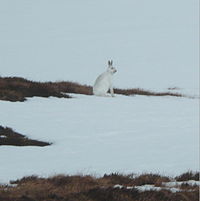- White
-
This article is about the color. For other uses, see White (disambiguation)."white light" redirects here. For other uses, see White Light.
White — Common connotations — ghosts, purity, nobility, softness,[disambiguation needed  ] emptiness, God, sickness, lack, snow, ice, heaven, Caucasian, peace, clean, air, sunlight, light, surrender, clouds, frost, milk, cream, good, cotton, angels, weakness, bones, protagonist, winter, innocence, amphetamine, Monarchism, methamphetamine, cocaine, heroin, fentanyl
] emptiness, God, sickness, lack, snow, ice, heaven, Caucasian, peace, clean, air, sunlight, light, surrender, clouds, frost, milk, cream, good, cotton, angels, weakness, bones, protagonist, winter, innocence, amphetamine, Monarchism, methamphetamine, cocaine, heroin, fentanyl
— Color coordinates —
Hex triplet #FFFFFF RGBB (r, g, b) (255, 255, 255) HSV (h, s, v) (-°, 0%, 100%) Source By definition B: Normalized to [0–255] (byte) White is a color, the perception of which is evoked by light that stimulates all three types of color sensitive cone cells in the human eye in nearly equal amounts and with high brightness compared to the surroundings. A white visual stimulation will be void of hue and grayness.[1]
White light can be generated in many ways. The sun is such a source, electric incandescence is another. Modern light sources are fluorescent lamps and light-emitting diodes. An object whose surface reflects back most of the light it receives and does not alter its color will appear white, unless it has very high specular reflection.
Since white is the extreme end of the visual spectrum (in terms of both hue and shade), and since white objects - such as clouds, snow and flowers - appear often in nature, it has frequent symbolism. Human culture has many references to white, often related to purity and cleanness, whilst the high contrast between white and black is often used to represent opposite extremes.
Contents
Etymology
The word white continues Old English hwīt, ultimately from a Common Germanic *χwītaz also reflected in OHG (h)wîz, ON hvítr, Goth. ƕeits. The root is ultimately from Proto-Indo-European language *kwid-, surviving also in Sanskrit śveta "to be white or bright"[2] and Slavonic světŭ "light".[3][4] The Icelandic word for white, hvítur, is directly derived from the Old Norse form of the word hvítr. Common Germanic also had the word *blankaz ("white, bright, blinding"), borrowed into Late Latin as *blancus, which provided the source for Romance words for "white" (French blanc, Spanish blanco, Italian bianco, etc.). The root survives in English in the word black.[5]
Light
 White light refracted in a prism revealing the color components.
White light refracted in a prism revealing the color components.
Until Newton's work became accepted, most scientists believed that white was the fundamental color of light; and that other colors were formed only by adding something to white. Newton demonstrated this was not true by passing white light through a prism, then through another prism. If the colors were added by the prism, the second prism should have added further colors to the single-colored beam. Since the single-colored beam remained a single color, Newton concluded that the prism merely separated the colors already present in the light. White light is the effect of combining the visible colors of light in suitable proportions (the same present in solar light).
Since the impression of white is obtained by three summations of light intensity across the visible spectrum, the number of combinations of light wavelengths that produce the sensation of white is practically infinite. There are a number of different white light sources such as the midday sun, incandescent lamps, fluorescent lamps and white LEDs; due to the phenomenon of metamerism, such sources can appear similar whilst having quite different spectra. The impression of white light can also be created by mixing appropriate intensities of the primary colors of light, red, green and blue (RGB), a process called additive mixing, as seen in many display technologies.
Color temperature
The best known way to generate white light is by the process called incandescence, or black body radiation where bodies of atoms with a certain temperature emit a certain type of radiation. For example, the color of a black body at a temperature of 2,848 kelvins. This is closely matched by incandescent light bulbs. The correlated color temperature of such a light bulb is 2,848 K. Daylight can vary from a cool red up to a bluish 5,600 K. Not all black body radiation can be considered white light: the background radiation of the universe, to name an extreme example, is only a few kelvins hot, and is not visible.
In astronomy the stellar class of stars are determined by the color temperature. For instance are white dwarfs small dense stars thought to be the final evolutionary state.
Computer displays often have a color temperature control, allowing the user to select the color temperature (usually from a small set of fixed values) of the light emitted when the computer produces the electrical signal corresponding to white. The RGB coordinates of white are (1.0, 1.0, 1.0).
Objects
 Foam of a transparent and reflecting liquid, turning white when the size of the bubbles decreases.
Foam of a transparent and reflecting liquid, turning white when the size of the bubbles decreases.
 Newly commissioned officers all in white, celebrate their new positions by throwing their midshipmen covers into the air as part of the U.S. Naval Academy class of 2005 graduation and commissioning ceremony.
Newly commissioned officers all in white, celebrate their new positions by throwing their midshipmen covers into the air as part of the U.S. Naval Academy class of 2005 graduation and commissioning ceremony.
White light reflected off objects can be seen when no part of the light spectrum is reflected significantly more than any other and the reflecting material has a degree of diffusion. People see this when transparent fibers, particles, or droplets are in a transparent matrix of a substantially different refractive index. Examples include classic "white" substances such as sugar, foam, pure sand or snow, cotton, clouds, and milk. Crystal boundaries and imperfections can also make otherwise transparent materials white, as in the milky quartz or the microcrystalline structure of a seashell. This is also true for artificial paints and pigments, where white results when finely divided transparent material of a high refractive index is suspended in a contrasting binder. Typically paints contain calcium carbonate or synthetic rutile with no other pigments if a white color is desired.
While the color of a light source can be reasonably measured by its correlated color temperature, a different approach is required for objects since different samples may appear white without a reference. Thus, assessment of whiteness requires a comparison. The International Commission on Illumination (CIE) prescribes one such method.
In painting, white can be crafted by reflecting ambient light from a white pigment, although the ambient light must be white light, or else the white pigment will appear the color of the light. White when mixed with black produces gray. In watercolor painting, white areas mark the absence of paint on the paper.
In nature
Snow and ice are normally white due to the diffusing structure of transparent water ice crystals. The same is true for many types of clouds where droplets of water diffuse the white light from the Sun. Many mountains with winter or year-round snow cover are named accordingly: Mauna Kea means white mountain in Hawaiian, Mont Blanc means white mountain in French. Changbai Mountains literally meaning 'Perpetually White' Mountains, marks the border between China and Korea and Mount Kilimanjaro's name could originate from Swahili meaning little white hill. The White Sea, an inlet of the Barents Sea on the northwest coast of Russia is undoubtedly named so due to the icy environment.
Beaches with sand containing high amounts of quartz also appear white, which may explain the number of islands called White Island around the world.
Cultural meaning
White materials show colored stains and dirt very clearly, due to the high contrast. This is the likely reason it is associated with purity and cleanness, and very often within a religious context. In Chinese, Vietnamese, Korean, Indian tradition, white is the color of mourning and death.[citation needed]
Symbolic dualism with black
Further information: black and white dualismWhite and black has the biggest visual contrast, this can easily be associated to other opposite concepts such as day and night or good and evil. White often represents purity or innocence in Western Civilization,[6] particularly as white clothing or objects are easy to stain. In most Western countries white is the color worn by brides at weddings. Angels are typically depicted as clothed in white robes. Healing or "good" magic is called White magic.[7] In early film Westerns the stereotypically "good guy" wore a white hat (earning them the name "White Hats") while the "bad guy" wore black (earning them the name "Black Hats"). This has given rise to the use of the names black hat and white hat for people who abuse and counter abuse of computer systems respectively. In popular culture this idea is sometimes reversed to play on reversal of stereotypes.
In taoism which has great influence in Eastern culture Yin and yang is usually depicted in black and white, depicting the two colors as opposites. The two opponents in board games of abstract strategy often has one as white, such as go, chess, and checkers.
Government and politics
White is often associated with Monarchism as opposed to other forms of government. This originated from Royalist rebellions against the French Revolution (see Revolt in the Vendée), known as the White terror. It re-emerged in the years following World War I, with civil wars fought between Reds and Whites, for instance the Civil War in Russia and the Civil War in Finland. A similar use is seen in the naming of the White Revolution (Persian: Enghelâb-e-Sefid),a far-reaching series of reforms launched in 1963 by the last Shah of Iran. If a strong leader emerges during a time of crisis, he is often referred to as a man on a white horse; this term is often associated with dictatorships.
White is also associated with peace. The white ribbon is worn by movements denouncing violence against women and the White Rose was a non-violent resistance group in Nazi Germany. This symbolism has long roots as seen by the white dove originating from the story of Noah. A white flag is an international sign of either surrender, or truce, that is, it is a sign of peaceful intent, typically at time of war. To show the white feather is to display cowardice. White is the purest of all colors. In Victorian Britain, a purported coward would be presented with a white feather.[citation needed]
White as symbol of purity is seen in the expression Whitewash, which figuratively, means an attempt to obscure unpleasant facts by issuing a blanket of lies or misrepresentations. See propaganda. A white paper on the other hand will often be an authoritative report on a major issue, as by a team of experts; a government report outlining policy; or a short treatise whose purpose is to educate industry customers. Associating a paper with white may signify clean facts and unbiased information.
Religion
The association of white with purity and peace is used by many religions.
 Wedding kimono
Wedding kimono
 Mountain hare in winter camouflage
Mountain hare in winter camouflage
 Surrender of Lord Cornwallis, by John Trumbull
Surrender of Lord Cornwallis, by John Trumbull
Ihram clothing (also spelt Ahram clothing) includes men's and women's garments worn by Muslim people during the Ihram pilgrimage (Hajj). Men's garments often consist of two white un-hemmed sheets (usually towelling material) and are universal in appearance. The top (the riḍā) is draped over the torso and the bottom (the izār) is secured by a belt; plus a pair of sandals. Women's clothing, however, varies considerably and reflects regional as well as religious influences. Ihram is typically worn during Dhu al-Hijjah, the last month in the Islamic calendar.
Where liturgical robes of priests are often white, for instance the Roman Catholic Pope's cassock is white. White robes (with green aprons ) are worn inside Mormon Temples.[8] Many images dealing with God and heaven portray it as existing in the clouds, where everything is white. This phenomenon is not limited to western culture; in Yoruba religion, the orisha Obatala in the Ifá tradition is represented by white. Obatala is associated with calmness, morality, old age, and purity. Also more recently founded religions incorporate symbolism surrounding white. In Theosophy and similar religions, the deities called the Great White Brotherhood are said to have white auras.[9]
White is the traditional color of bridal dress in both western (European) and Japanese weddings. In Western weddings, a white dress is thought to be symbolic of purity (the bride has not engaged in pre-marital sex). This is also said to be the symbolism of the veil. In Japanese weddings, white is to symbolize the "death"[citation needed] of their former family and their introduction into their new family.
In some Asian and Slavic cultures, white is considered to be a color that represents death.[10] White also represented death in ancient Egypt, representing the lifeless desert that covered much of the country; black was held to be the color of life, representing the mud-covered fertile lands created by the flooding of the Nile and giving the country its name (Kemet, or "black land").
Clothing
White clothing can be practically used as camouflage in snowy environments, or for reflecting harsh sunlight. However, most uniforms with white elements are used as a sign of authority - dissociating the wearer from manual labour or a dirty environment. In a highly formal social function, the traditional dress for men attending is white tie, or white tie and tails, a white bow tie and a swallowtail coat. Physicians and scientists are known for wearing white coats both as a practical measure as protecting from and showing spills and stains, and as a sort of uniform showing authority.
Many traditional sports use white uniforms for players, such as Wimbledon tennis, cricket, and baseball and basketball, where white is the color typically used for uniforms worn by the home team. This may be a result of the sports being played outside exposing players to direct sunlight for prolonged periods of time.
Ethnography
Main article: color metaphor for raceThe term white is often used to denote the race of pale-skinned Caucasoids people of European descent perceived as being colored varying tones of pale off white to "white" skin color, whose actual skin color can also vary from pale pink to pale brown; it has been suggested that the colors beige or peach could also be used to represent the average color of most Caucasians. See White people.
Vexillology and heraldry
Vatican City has a flag of yellow and white, although in normal European heraldry one is not supposed to use these two colors together adjacently because both represent metals--yellow represents gold and white represents silver), to deliberately show that the Church is not bound by secular rules.[11] In English heraldry, white or silver signified brightness, purity, virtue, and innocence.[12]
See also
- Color realism (art style)
- List of colors
- Variations of white
References
- ^ Wyszecki & Stiles. Color Science (Second Edition ed.). p. 506.
- ^ Sanskrit-Lexicon.uni-koeln.de (Monier Williams Sanskrit-English Dictionary, page 1106).
- ^ Max Vasmer, Этимологический словарь русского языка, т.III, Москва 1971, 575-576.
- ^ OED; Harper, Douglas (November 2001). "Online Etymology Dictionary". http://www.etymonline.com/index.php?search=white&searchmode=none. Retrieved 2008-03-26.
- ^ http://www.etymonline.com/index.php?term=black
- ^ The Encyclopedia Americana: A Library of Universal Knowledge. Encyclopedia Americana Corp. 1918. p. 329.
- ^ Bailey, Alice A. A Treatise on White Magic New York:1934 Lucis Publishing Co.
- ^ Whalen, William J. The Latter Day Saints in the Modern Day World 1962
- ^ Prophet, Elizabeth Clare The Great White Brotherhood in the Culture, History and Religion of America Summit University Press, 1975
- ^ Henry Dreyfuss. Symbol Sourcebook: An Authoritative Guide to International Graphic Symbols. http://www.librarything.com/work/232578.
- ^ Volume F--Article on Flags Compton’s Encyclopedia 1958 edition
- ^ American Girls Handy Book: How to Amuse Yourself and Others, by Adelia Beard. ISBN 978-0879236663. p 369.
External links
Web colorsblack gray silver white maroon red purple fuchsia green lime olive yellow navy blue teal aqua Shades of whiteAnti-flash white Antique white Beige Blond Cornsilk Cosmic latte Cream Eggshell Floral white Ghost white Honeydew Isabelline Ivory Lavender blush Lemon chiffon Linen Magnolia Mint cream Munsell Navajo white Old lace Papaya whip Pearl Seashell Snow Splashed white Vanilla White White smoke The samples shown above are only indicative. Shades of grayGray Ash gray Battleship gray Black Cadet gray Charcoal Cool gray Davy's gray Payne's gray Silver Slate gray Taupe Purple taupe Medium taupe Rose quartz Taupe gray Timberwolf White The samples shown above are only indicative. Color topics Color perception Color space Basic colors Related Categories:
Wikimedia Foundation. 2010.




